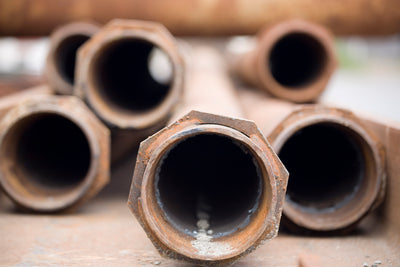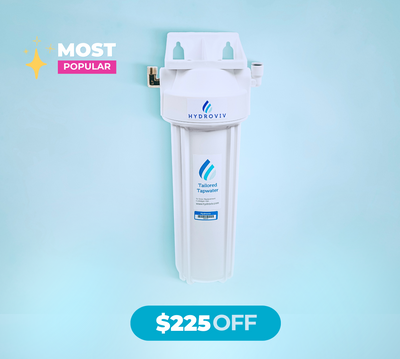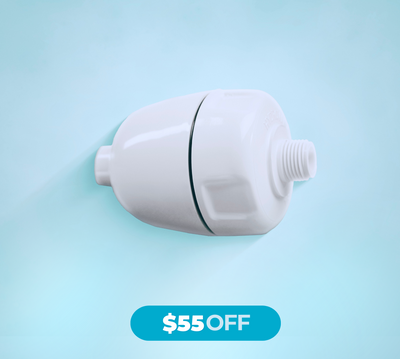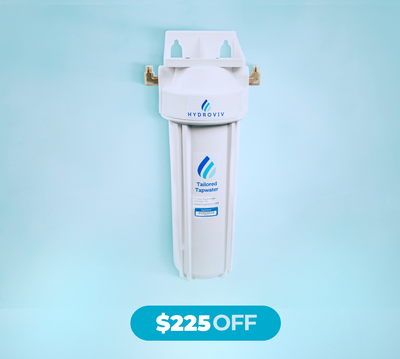Things To Know Before Replacing Your Home's Lead Service Pipe
RSS
**Updated 12/11/2023
9.2 million homes in the United States still use have a functioning Lead Service Line to deliver municipal water into homes. The EPA recently announced that it will allocate $15 billion in the Bipartisan Infrastructure Law funding to states, Tribes, and territories towards lead service line replacement. While lead pipe replacement programs can be a great long-term solution to eliminate a source of lead contamination, it doesn’t make all problems go away. Here's the lead water service pipe information you need to know if you are considering replacing your home's lead service pipe.
Service Pipe Replacement Is A Shared Responsibility
The Lead Service Line (LSL) connects the public supply to an individuals homes. In most cases, the city owns the section of pipe up to the property line, but the section on the homeowner’s property belongs to the homeowner. The diagram below (from DC Water’s website) shows how a homes' LSL (also called a water service pipe) connects the city's water main to a private home. When it comes to replacing a Lead Service Line, some cities (including Washington DC) have programs in place to coordinate efforts so the private and public sections can be replaced at the same time.

Lead Concentrations Often Go Up For Months After Replacing A Lead Service Pipe
It seems counter-intuitive, but lead levels typically go up for at least a few months (and sometimes over a year) after a lead service line is replaced. This is because the protective coating/buildup inside the lead pipe is disturbed, and the debris/freshly uncovered pipe surface can contaminate the water with lead. While this spike in lead levels is largest when a service line is partially replaced, we also have users who have seen a spike in lead levels after a complete service line replacement.Your Home Can Still Have Lead In Its Plumbing
If a home is old enough to have a lead water service pipe, there is a good chance that there is lead somewhere else in the home's plumbing as well. While most cities stopped installing lead service pipes in the 1950s-1960s, residential plumbing standards lagged behind for several decades. For example, in plumbing that predates 1986, solder used to join copper pipes commonly contained 50% lead (it’s actually called 50/50 solder). Since then, there have been reductions in the amount of lead that can be used in residential plumbing connections and fixtures, with the most recent phase out taking place in 2014.
Lead Can Be Introduced 'Downstream' Of A Water Filter
This seems obvious, but it’s something that’s often forgotten when people inquire about whole house filters. This is why we recommend that people who are looking to filter lead from their water install a filter at the point of use (connected to the faucet), not at the point where the water enters the home.
EPA Lead Pipe Survey
A recently released EPA nationwide survey of water infrastructure revealed that 9.2 million lead pipes carry water into homes across the U.S. This survey was the first time lead pipes were being counted. Florida had the highest number of lead water pipes in the nation with an estimated 1.16 million pipes or 12.6% of the total. Illinois had the second highest number of lead pipes in the nation, with an estimated 1.04 million pipes, or 11.6 % of the total. The states with the next highest number of lead pipes were Ohio (8.11%), Pennsylvania (7.5%), Texas (7.05%), and New York (5.38%). EPA hopes to use this survey to prioritize the states that need more funding for improvements, which include identifying and removing lead pipes.
Should You Replace Your Home's Lead Service Pipe?
For the reasons listed above, we highly recommend that people treat replacing their home's lead service pipe as part of an overall lead reduction strategy, not as a silver bullet. If a person decides to replace the lead home water service pipe, we also recommend using point of use custom water filters for all faucets used for drinking, and to monitor lead levels in their home's water for 18 months after the pipe is replaced.
As always, we encourage everyone to take advantage of Hydroviv’s “Help No Matter What” approach to technical support. If you have any questions about lead home water service pipes, water filtration, or water quality in general, our Technical Support Team is happy to answer your questions, even if you have no plans to buy Hydroviv’s products! Drop us a line (Support@hydroviv.com) or use the live chat on our website.
Other Articles We Think You'll Enjoy:Why TDS Meters Don't Tell You Anything About The Presence of Lead
Does Boiling Or Freezing My Water Remove Lead?
Does New York City Have A Lead Problem?


